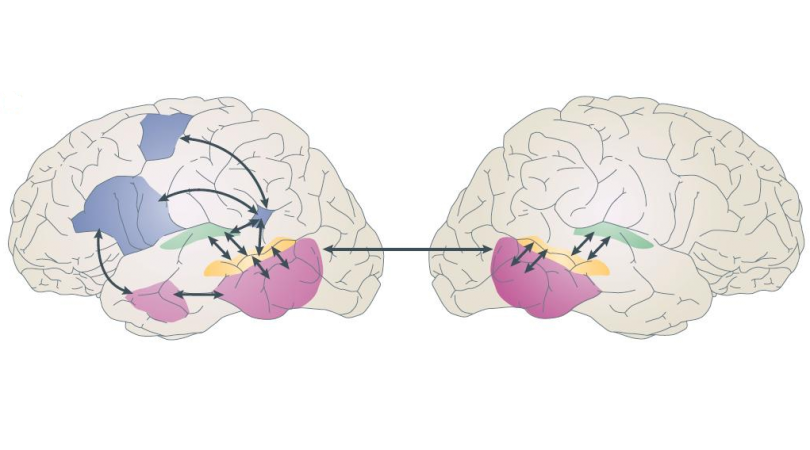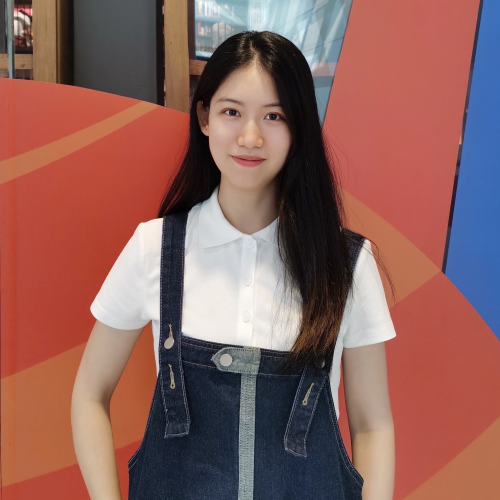【限时资源,期刊全文】Brain and Language《大脑和语言》2019年论文集-共71篇论文(侵删)
1575 阅读 10 下载 2020-06-24 18:14:03 上传 73.77 MB
本期推送的是SSCI期刊——Brain and Language《大脑和语言》2019年论文集、即第188-199卷共71篇论文,其中目录可在正文中查看,全文可以点击文末附件列表下载(注意:本资源包含两个附件!),下
Brain and Language《大脑和语言》2019年论文集-共71篇论文(侵删)
资料整理:张明辉(微信:zhangxiaojian160408)
(注意:本资源包含两个附件,下载链接三天内有效,失效后请联系小编微信索取)

| 卷号 | 论文号 | 论文题目 |
| Vol. 188 | Article 01 | The role of experience for abstract concepts: Expertise modulates the electrophysiological correlates of mathematical word processing |
| Vol. 188 | Article 02 | Transcranial direct current stimulation (tDCS) selectively modulates semantic information during reading |
| Vol. 188 | Article 03 | Composition of event concepts: Evidence for distinct roles for the left and right anterior temporal lobes |
| Vol. 188 | Article 04 | Behavioral and neural evidence on the processing of ambiguous adjective-noun dependencies in Korean sentence comprehension |
| Vol. 188 | Article 05 | Cortical thickness of Broca’s area and right homologue is related to grammar learning aptitude and pitch discrimination proficiency |
| Vol. 189 | Article 06 | Similar within-utterance loci of dysfluency in acquired neurogenic and persistent developmental stuttering |
| Vol. 189 | Article 07 | Developmental changes of association strength and categorical relatedness on semantic processing in the brain |
| Vol. 189 | Article 08 | Knowledge of language function and underlying neural networks gained from focal seizures and epilepsy surgery |
| Vol. 190 | Article 09 | The effects of distractor set-size on neural tracking of attended speech |
| Vol. 190 | Article 10 | Musical meaning modulates word acquisition |
| Vol. 190 | Article 11 | Repetitive verbal behaviors are not always harmful signs: Compensatory plasticity within the language network in aphasia |
| Vol. 190 | Article 12 | Gesture height reflects common ground status even in patients with amnesia |
| Vol. 191 | Article 13 | An fMRI-adaptation study of phonological and orthographic selectivity to written words in adults with poor reading skills |
| Vol. 191 | Article 14 | Roles of ventral versus dorsal pathways in language production: An awake language mapping study |
| Vol. 191 | Article 15 | Test-retest reliability in an fMRI study of naming in dementia |
| Vol. 191 | Article 16 | Neural mechanisms for coping with acoustically reduced speech |
| Vol. 191 | Article 17 | Is the LAN effect in morphosyntactic processing an ERP artifact? |
| Vol. 191 | Article 18 | Are variants in sex hormone metabolizing genes associated with stuttering? |
| Vol. 192 | Article 19 | Steady state visual evoked potentials in reading aloud: Effects of lexicality, frequency and orthographic familiarity |
| Vol. 192 | Article 20 | Successful second language learning is tied to robust domain-general auditory processing and stable neural representation of sound |
| Vol. 192 | Article 21 | Continuous theta burst stimulation over right pars triangularis facilitates naming abilities in chronic post-stroke aphasia by enhancing phonological access |
| Vol. 193 | Article 22 | Editorial for the special issue on language and epilepsy |
| Vol. 193 | Article 23 | Language function in childhood idiopathic epilepsy syndromes |
| Vol. 193 | Article 24 | Changes in functional organization and functional connectivity during story listening in children with benign childhood epilepsy with centro-temporal spikes |
| Vol. 193 | Article 25 | Epilepsy, language, and social skills |
| Vol. 193 | Article 26 | Neuroimaging correlates of language network impairment and reorganization in temporal lobe epilepsy |
| Vol. 193 | Article 27 | Relationship between neuronal network architecture and naming performance in temporal lobe epilepsy: A connectome based approach using machine learning |
| Vol. 193 | Article 28 | The peri-Sylvian cortical network underlying single word repetition revealed by electrocortical stimulation and direct neural recordings |
| Vol. 193 | Article 29 | The use of intracranial recordings to decode human language: Challenges and opportunities |
| Vol. 194 | Article 30 | Profiling sentence repetition deficits in primary progressive aphasia and Alzheimer’s disease: Error patterns and association with digit span |
| Vol. 194 | Article 31 | Brain networks involved in accented speech processing |
| Vol. 194 | Article 32 | Prefrontal sensitivity to changes in language form and semantic content during speech production |
| Vol. 194 | Article 33 | Neurocognitive basis of repetition deficits in primary progressive aphasia |
| Vol. 194 | Article 34 | A longitudinal study of speech production in primary progressive aphasia and behavioral variant frontotemporal dementia |
| Vol. 194 | Article 35 | Neurocognitive correlates of category ambiguous verb processing: The single versus dual lexical entry hypotheses |
| Vol. 194 | Article 36 | Are you really cursing? Neural processing of taboo words in native and foreign language |
| Vol. 194 | Article 37 | Semantic and BCI-performance in completely paralyzed patients: Possibility of language attrition in completely locked in syndrome |
| Vol. 194 | Article 38 | The neurocognitive signature of focus alternatives |
| Vol. 194 | Article 39 | Failure to attune to language predicts autism in high risk infants |
| Vol. 194 | Article 40 | Stuttering and gray matter morphometry: A population-based neuroimaging study in young children |
| Vol. 194 | Article 41 | Brain volumetric correlates of dysarthria in multiple sclerosis |
| Vol. 194 | Article 42 | Effects of formant proximity and stimulus prototypicality on the neural discrimination of vowels: Evidence from the auditory frequency-following response |
| Vol. 195 | Article 43 | Brain activity during spoken word recognition in subacute aphasia |
| Vol. 195 | Article 44 | Inconsistency of findings due to low power: A structural MRI study of bilingualism |
| Vol. 195 | Article 45 | Chunking of phonological units in speech sequencing |
| Vol. 195 | Article 46 | BiLex: A computational approach to the effects of age of acquisition and language exposure on bilingual lexical access |
| Vol. 195 | Article 47 | Bilingual effects on lexical selection: A neurodevelopmental perspective |
| Vol. 196 | Article 48 | Microstructural plasticity in the bilingual brain |
| Vol. 196 | Article 49 | Neural correlates and functional connectivity of lexical tone processing in reading |
| Vol. 196 | Article 50 | Noninvasive neurostimulation of left temporal lobe disrupts rapid talker adaptation in speech processing |
| Vol. 196 | Article 51 | English only? Monolinguals in linguistically diverse contexts have an edge in language learning |
| Vol. 196 | Article 52 | Language learning experience and mastering the challenges of perceiving speech in noise |
| Vol. 197 | Article 53 | Alternating-color words influence Chinese sentence reading: Evidence from neural connectivity |
| Vol. 197 | Article 54 | Clinical and neuroimaging characteristics of clinically unclassifiable primary progressive aphasia |
| Vol. 197 | Article 55 | Neural processing critical for distinguishing between speech sounds |
| Vol. 197 | Article 56 | Stable auditory processing underlies phonological awareness in typically developing preschoolers |
| Vol. 197 | Article 57 | Effects of bilingual language experience on basal ganglia computations: A dynamic causal modeling test of the conditional routing model |
| Vol. 197 | Article 58 | A longitudinal investigation of structural brain changes during second language learning |
| Vol. 198 | Article 59 | Testing the influence of musical expertise on novel word learning across the lifespan using a cross-sectional approach in children, young adults and older adults |
| Vol. 198 | Article 60 | The relationship between bilingual experience and gyrification in adulthood: A cross-sectional surface-based morphometry study |
| Vol. 198 | Article 61 | Aerobic fitness relates to differential attentional but not language-related cognitive processes |
| Vol. 198 | Article 62 | Brain-behavior relationships in incidental learning of non-native phonetic categories |
| Vol. 198 | Article 63 | Bilingual children access multiplication facts from semantic memory equivalently across languages: Evidence from the N400 |
| Vol. 199 | Article 64 | Tapping to a beat in synchrony predicts brain print sensitivity in pre-readers |
| Vol. 199 | Article 65 | White noise facilitates new-word learning from context |
| Vol. 199 | Article 66 | Shared premotor activity in spoken and written communication |
| Vol. 199 | Article 67 | Dynamic effects of habituation and novelty detection on newborn event-related potentials |
| Vol. 199 | Article 68 | Morphological processing in Chinese engages left temporal regions |
| Vol. 199 | Article 69 | Written sentence context effects on acoustic-phonetic perception: fMRI reveals cross-modal semantic-perceptual interactions |
| Vol. 199 | Article 70 | Top-down and bottom-up mechanisms as reflected by beta and gamma oscillations in speech perception: An individual-difference approach |
| Vol. 199 | Article 71 | fMRI evidence that left posterior temporal cortex contributes to N400 effects of predictability independent of congruity |
所需积分:0 分
限期开放已结束
表情
图片
附件















